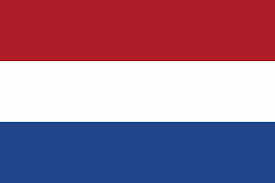Netherlands flag Colors Code hex, png svg
History of the Netherlands Flag
The flag of the Netherlands has a rich history and its colors hold significant meaning. Here is a brief overview:
Origins and Evolution
- Early Flags (15th-16th Century):
- The earliest flags were related to the coat of arms of the House of Nassau, to which the Dutch royal family belongs.
- The original flag colors were orange, white, and blue, inspired by the livery of William of Orange, a leading figure in the Dutch Revolt against Spanish rule.
- Dutch Revolt (1568-1648):
- During the Dutch Revolt, the “Prince’s Flag” (Prinsenvlag) became popular, featuring horizontal stripes of orange, white, and blue. This flag symbolized the fight for independence.
- 17th Century Changes:
- Over time, the orange stripe began to be replaced by red. The reasons for this change are debated, but theories include the fading of orange dye to red over time and political reasons.
- Official Adoption (1937):
- The red, white, and blue tricolor was officially adopted as the national flag on February 19, 1937. This decision was confirmed during World War II and has remained unchanged since.
Colors and Their Meaning
- Red:
- Initially represented the color orange but eventually transitioned to red.
- Symbolizes bravery, strength, and valor.
- White:
- Represents peace and honesty.
- Stands for the neutrality and integrity of the Dutch people.
- Blue:
- Symbolizes vigilance, truth, loyalty, and justice.
- Represents the rivers and water bodies, reflecting the Netherlands’ maritime tradition and struggle against water.
The combination of these colors reflects the Dutch values of liberty, independence, and their historical maritime prowess.
Guess the Flags Quiz
Sharing is caring 🤗

National Symbols 👇
- 🏁 National Flags
- 🦁 National Animals
- 🐦 National Birds
- 🌻 National Flowers
- 🌴 National Trees
- 🥭 National Fruits
- 🍹 National Drinks
- 👴 National Founders
- ☘️ National Emblems
- 🍲 National Dishes
- 🏛️ National Monuments
- ✍️ National Poets
- 🕌 National Mausoleums
- 🎺 National Instruments
- 🦸 National Heroes
- 📆 National Days

